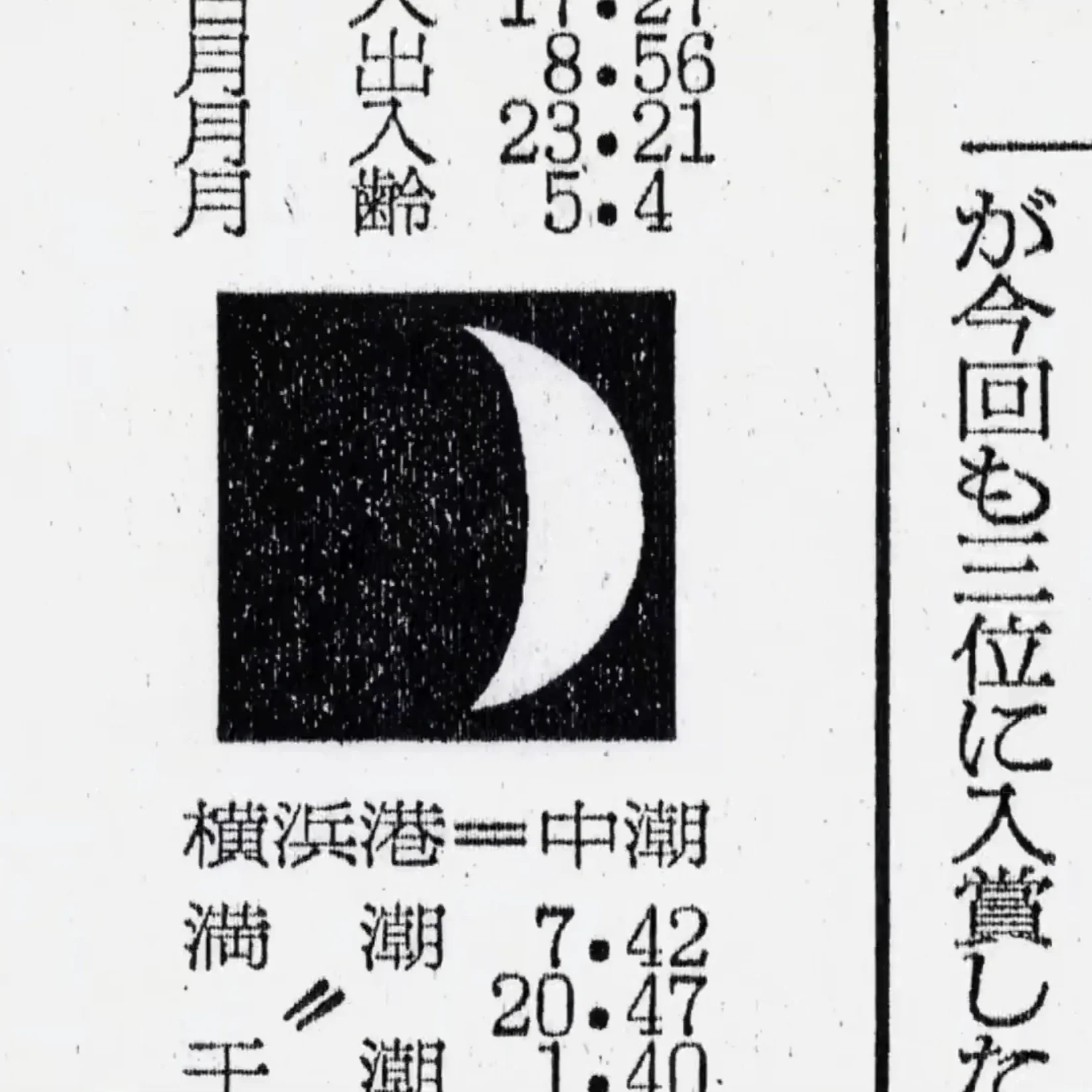Yellow Magic Orchestra - Pioneers of Japanese Techno-Pop
© Masayoshi Sukita
While Kraftwerk was busy conquering Europe with their innovative approach to electronic sound design, their Japanese counterparts were leaving their mark on the other side of the world. Yellow Magic Orchestra (YMO) stands as one of the most influential and innovative bands in the history of electronic music.
Formed in Tokyo in 1978, the trio of Haruomi Hosono, Ryuichi Sakamoto, and Yukihiro Takahashi played a crucial role in shaping the sound of the late 20th century, pioneering what would later be known as techno-pop or synthpop. Their music, characterized by its fusion of electronic sounds, traditional Japanese elements, and Western pop sensibilities, helped bridge the cultural gap between East and West while laying the groundwork for a multitude of genres that would follow.
We take a deep dive into YMO’s journey, from their formation to their peak and beyond, examining their inspirations, creative process, live performances, and effect on both the Japanese and global music scenes, as well as the individual careers of its members.
In this article
The Formation of Yellow Magic Orchestra
The Rise to Fame - YMO’s Early Albums
YMO’s Global Impact
YMO’s Hiatus and Solo Ventures
The Reformation
The Legacy of Yellow Magic Orchestra
Yukihiro Takahashi (left), Ryuichi Sakamoto (middle), Haruomi Hosono (right)
The Formation of Yellow Magic Orchestra
The Seeds of Collaboration
The origins of YMO can be traced back to the music scene of 70s Japan, where each member was already making a name for themselves in various musical endeavors.
Haruomi Hosono, a key figure in the formation of YMO, was instrumental in the development of modern Japanese pop and rock music. He first gained prominence as a member of the psychedelic rock band Apryl Fool, followed by his involvement in the folk-rock band Happy End, which is often credited with laying the foundations of Japanese rock.
Ryuichi Sakamoto, a classically trained pianist and composer, was already pushing the boundaries of music through his work in electronic experimentation. His studies in ethnomusicology at Tokyo University of the Arts further fueled his interest in blending traditional music with modern technology.
Yukihiro Takahashi, the third member of YMO, was an accomplished drummer and vocalist who had gained fame as a member of the Sadistic Mika Band, a group known for its eclectic mix of glam rock, pop, and jazz influences.
The three musicians came together through a shared interest in electronic music and a desire to explore new sonic territories. Hosono had been experimenting with synthesizers and electronic sounds in his solo work and was inspired by the burgeoning electronic music scene in Europe, particularly the work of Kraftwerk.
In 1978, Hosono invited Sakamoto and Takahashi to collaborate on an electronic music project, initially intended as a one-off experiment. The chemistry between the three was undeniable, and what began as a side project soon evolved into a full-fledged band: Yellow Magic Orchestra.
Early Influences
YMO’s early sound was heavily influenced by both Western and Eastern musical traditions, as well as by the technological advancements of the time. Kraftwerk’s minimalist approach to electronic music and their use of synthesizers and sequencers were major influences on YMO, but the band also drew inspiration from a wide range of sources, including Japanese traditional music, exotica, and arcade games.
Hosono’s fascination with the exotica genre, popularized in the 1950s and 1960s by artists like Martin Denny and Les Baxter, played a significant role in shaping YMO’s sound. Exotica’s blend of tropical and Asian influences with Western lounge music provided a template for YMO’s fusion of traditional Japanese sounds with contemporary electronic music. Sakamoto’s classical background and deep interest in global music traditions further enriched the band’s sonic palette, while Takahashi’s pop sensibilities and rhythmic innovations helped anchor their experiments in accessible, catchy melodies.
The band’s name itself was a playful reference to Japan’s growing fascination with technology and the global perception of Japan as a land of futuristic innovations. “Yellow Magic” referred to the exoticism and mystique often associated with Japan in the West, while “Orchestra” suggested a blend of the traditional and modern, acoustic and electronic. This duality became a defining characteristic of YMO’s music.
© Yellow Magic Orchestra
The Rise to Fame - YMO’s Early Albums
Yellow Magic Orchestra (1978)
YMO’s debut album, Yellow Magic Orchestra, released in 1978, was a bold statement of intent. The album was recorded at the famed Nippon Columbia Studio in Tokyo, where the band had access to the latest synthesizers, sequencers, and drum machines. The result was a pioneering work of electronic music that blended synthesizer-driven melodies with traditional Japanese sounds and rhythms.
One of the standout tracks on the album, Computer Game, epitomized YMO’s unique approach. The track opens with the sounds of arcade games—a nod to Japan’s burgeoning video game industry—before launching into a bouncy, infectious melody driven by synthesizers. The album also featured a cover of Martin Denny’s Firecracker, which became a hit in both Japan and the United States, introducing Western audiences to YMO’s distinctive sound.
The album was a commercial success, particularly in Japan, where it reached the top of the charts. Its success helped to establish YMO as a leading force in the global electronic music scene and laid the groundwork for their international breakthrough.
Solid State Survivor (1979)
Following the success of their debut, YMO quickly returned to the studio to record their second album, Solid State Survivor. Released in 1979, the album solidified YMO’s reputation as innovators in electronic music. The album featured a more polished sound, with tighter production and a greater emphasis on melody and song structure.
Rydeen, one of the album’s most famous tracks, became an instant classic. Its infectious melody, propelled by Sakamoto’s synthesizer lines and Takahashi’s precise drumming, exemplified YMO’s ability to create music that was both experimental and accessible. Other standout tracks on the album included Technopolis, which celebrated Tokyo’s status as a hub of technological innovation, and Behind the Mask, a track that would later be covered by artists like Michael Jackson and Eric Clapton.
Solid State Survivor was a commercial and critical success, both in Japan and internationally. It topped the charts in Japan and received acclaim for its innovative use of technology in music. The album’s success also helped to popularize the genre of synthpop, which would dominate the charts in the 1980s.
YMO’s Global Impact
Pioneering Use of Technology
YMO was among the first bands to fully embrace the use of new electronic instruments and technology in their music. They were early adopters of synthesizers, sequencers, and drum machines, and their use of these tools set them apart from their contemporaries. The Roland TR-808 drum machine, which would later become iconic in hip-hop and electronic dance music, was a staple of YMO’s sound.
The band was also known for their innovative use of sampling and digital technology. They often incorporated sounds from video games, traditional Japanese instruments, and other sources into their music, creating a unique blend of the organic and synthetic. This approach was revolutionary at the time and helped to define the sound of electronic music for decades to come.
YMO’s live performances were also groundbreaking. They were one of the first bands to use video screens, synchronized lighting, and other visual effects as an integral part of their shows. These elements enhanced the futuristic and otherworldly atmosphere of their music, making their concerts immersive experiences for audiences.
Ryuichi Sakamoto using the TR-808
International Success
By the early 1980s, YMO had become a global phenomenon. They embarked on several international tours, including a successful tour of the United States in 1980. Their music resonated with audiences around the world, and they were particularly popular in Europe, where the electronic music scene was thriving.
YMO’s influence extended far beyond their own music. They were instrumental in popularizing electronic music in Japan, paving the way for future generations of Japanese artists. Internationally, their music inspired countless artists across a wide range of genres. In the United States and Europe, YMO was often compared to Kraftwerk, but their sound was distinct in its fusion of Eastern and Western influences.
The band’s work had a profound impact on the development of synthpop, a genre that became hugely popular in the 1980s. Artists like David Bowie, Depeche Mode, and Duran Duran have all cited YMO as an influence. Their influence can also be heard in the rise of electronic dance music (EDM) in the 1990s and 2000s, as well as in the music of contemporary artists like LCD Soundsystem and Daft Punk.
YMO’s Hiatus and Solo Ventures
By the mid-1980s, the members of YMO began to pursue solo projects more actively, and the band went on hiatus in 1984. While YMO had never officially disbanded, their solo careers took precedence, allowing each member to explore their individual artistic visions.
Haruomi Hosono, the de facto leader of YMO, continued to explore a wide range of musical styles in his solo work. His post-YMO albums delved into ambient music, world music, and even the exotica genre that had initially inspired YMO. Hosono also became a highly respected producer, working with a variety of artists and helping to shape the sound of Japanese pop music in the 1980s and 1990s.
Ryuichi Sakamoto’s solo career took him in a different direction, as he became a highly sought-after composer for film and television. His score for Merry Christmas, Mr. Lawrence (1983), which featured the iconic theme Forbidden Colours, brought him international acclaim. Sakamoto would go on to win an Academy Award for his score for The Last Emperor (1987), a collaboration with David Byrne and Cong Su. This success solidified Sakamoto’s reputation as one of the most versatile and accomplished composers of his generation.
He continued to release solo albums that spanned a variety of genres, from classical and jazz to ambient and experimental electronic music. Sakamoto also became known for his activism, particularly in environmental causes, using his music to raise awareness about issues like climate change and nuclear disarmament.
Yukihiro Takahashi, the drummer and vocalist of YMO, also pursued a successful solo career. He released a series of albums that blended pop, rock, and electronic music, showcasing his talent for catchy melodies and innovative production. Takahashi also formed several bands, including The Beatniks with Keiichi Suzuki and METAFIVE, a supergroup featuring members of the Japanese electronic and rock scenes. His work as a solo artist and collaborator demonstrated his continued commitment to pushing the boundaries of popular music.
The Reformation
Despite their individual successes, the members of YMO remained connected, both personally and musically. In the early 1990s, they reunited under the name Technodon, releasing an album in 1993 that featured a more experimental, ambient sound. Although this iteration of the band was short-lived, it marked the beginning of a series of reunions and collaborations that would continue in the following decades.
In the 2000s, the trio reunited again, this time under the name Human Audio Sponge, and later reverted to the original YMO moniker. They performed at several high-profile events, including the 2007 Live Earth concert in Tokyo, which was part of a global effort to combat climate change. Their performances during this period were marked by a mix of nostalgia and innovation, as they revisited their classic tracks while also exploring new musical ideas.
The 2010s saw YMO continue to perform together sporadically, with each member balancing their solo careers with these reunions. They released live recordings and reissues of their classic albums, introducing a new generation of listeners to their pioneering work. Their influence continued to be felt across the music world, as younger artists and fans discovered the timeless appeal of their music.
Yellow Magic Orchestra in 1993│© Nan Golding
The Legacy of Yellow Magic Orchestra
Impact on Music and Culture
Yellow Magic Orchestra’s legacy is immense and far-reaching. As pioneers of electronic music, they helped to define the sound of the late 20th century and influenced countless artists across a wide range of genres. Their innovative use of technology, blending of Eastern and Western musical traditions, and commitment to pushing the boundaries of popular music set them apart as true visionaries.
YMO’s influence can be heard in the work of artists from many different genres, including synthpop, techno, hip-hop, and EDM. Their music has been sampled and covered by a wide range of artists, from Janet Jackson to Michael Jackson's Behind the Mask, highlighting their impact on both mainstream and underground music scenes. The band’s exploration of themes related to technology, culture, and identity also anticipated many of the debates and discussions that would emerge in the digital age.
In Japan, YMO is revered as one of the most important and influential bands in the country’s history. They helped to establish Japan as a global leader in electronic music and paved the way for future generations of Japanese artists. Their influence can be seen in the work of contemporary Japanese musicians, from J-pop and rock bands to experimental electronic artists.
The Enduring Appeal of YMO
Even decades after their formation, YMO’s music continues to resonate with audiences around the world. Their ability to blend complex, innovative sounds with accessible, catchy melodies has given their music a timeless quality that appeals to listeners of all ages. As the digital age continues to evolve, YMO’s work remains as relevant as ever, offering insights into the relationship between technology and culture that are still applicable today.
The individual members of YMO—Haruomi Hosono, Ryuichi Sakamoto, and Yukihiro Takahashi—each left a significant mark on the world of music through their solo careers, further solidifying their place in music history. Their willingness to experiment and push the boundaries of what music can be has inspired countless artists and will continue to do so for years to come.
Yellow Magic Orchestra is a cultural and musical phenomenon whose impact is still felt today. Their pioneering work in electronic music, their innovative use of technology, and their unique blend of Eastern and Western influences have left an indelible mark on the world of music. As we continue to explore the possibilities of music in the digital age, YMO’s legacy serves as a reminder of the power of creativity and innovation in shaping the future.
The individual careers of Haruomi Hosono, Ryuichi Sakamoto, and Yukihiro Takahashi further underscore the depth of talent within YMO and their collective influence on music. As solo artists, each member has contributed significantly to the development of modern music, both in Japan and globally. Together, they created a body of work that continues to inspire and challenge musicians and listeners alike, ensuring that the legacy of Yellow Magic Orchestra will endure for generations to come.












The world and legacy of Japan's most renowned composer.